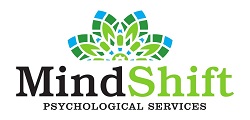Neurofeedback Therapy for Seasonal Affective Disorder (SAD)

Not many are aware that one of the causes of our mood change is the weather. This is what we call Seasonal Affective Disorder (SAD). As the season shifts to colder weather, less sunlight, shorter days and frequent gray skies, we are somehow struggling to keep ourselves happier and livelier.
During this cold season, which usually runs from November to February, a lot of people enjoy this cozy type of weather while enjoying a cup of tea or cuddling in bed with a book. However, the constant fluctuations of weather may cause others to feel depressed and anxious. Therefore, neurofeedback therapy is introduced to manage symptoms of SAD.
What is Seasonal Affective Disorder (SAD)?
The National Institute of Mental Health defines Seasonal Affective Disorder or SAD as a type of depression that is associated when seasons change. “In most cases, SAD symptoms start in the late fall or early winter and go away during the spring and summer; this is known as winter-pattern SAD or winter depression. Some people may experience depressive episodes during the spring and summer months; this is called summer-pattern SAD or summer depression and is less common.”
Those who live away from the equator are at risk for SAD because of lesser hours of environmental light or sunlight. “Researchers believe that the wintertime decrease in environmental light causes changes in our circadian rhythms, leading to an overproduction of the sleep hormone melatonin.” In addition, our skin needs 10 to 30 minutes of sun exposure to produce Vitamin D every day which can greatly help in managing SAD.
When there is less Vitamin D in the body, there is a decrease in serotonin levels and an increase in melatonin levels in our brain. “Serotonin is a neurotransmitter and mood regulator. Melatonin regulates your sleep cycle. Too little serotonin causes sadness and too much melatonin causes sleepiness.”
What are the symptoms of SAD?
Seasonal Affective Disorder is a type of depression. Many of its symptoms are similar to major depression but only last for four to five months. Based on the data of Mental Health America, 5% of the U.S. population experience seasonal depression each year. 4 out of 5 individuals with SAD are women. However, the number is greater for those who are living in very cold states like Alaska.
Symptoms for winter-pattern SAD include:
low energy
uncontrolled exhaustion during the day
oversleeping (hypersomnia)
overeating (particularly foods rich in carbohydrates)
weight gain
social withdrawal
Symptoms for summer-pattern SAD include:
difficulty in sleeping (insomnia)
restlessness
weight loss
anxiety
episodes of violent behavior
Experiencing SAD affects our daily life. It disrupts our routine and even our relationships with our family and close friends. If this continues, it is always a good idea to seek medical intervention before it gets worse.
How neurofeedback therapy helps in managing SAD?

The most common treatments for Seasonal Affective Disorder are light therapy, vitamin D therapies, psychotherapy, and medications. One treatment option that shows solid evidence of managing SAD is neurofeedback therapy.
The journal article Neurofeedback: A Comprehensive Review on System Design, Methodology and Clinical Applications explains Neurofeedback:
“Neurofeedback is a safe and non-invasive procedure that showed improvement in the treatment of many problems and disorders such as ADHD, anxiety, depression, epilepsy, ASD, insomnia, drug addiction, schizophrenia, learning disabilities, dyslexia and dyscalculia. ”Neurofeedback makes use of our brain’s elasticity to perform efficiently. It trains our brains to eliminate imbalances that cause depression and to improve and normalize our moods. It is done by measuring brainwave activity and when the procedure detects any anomalies, the patients will be taught to “train their brain” to produce the desired and optimal brainwaves.
“The more sessions a client goes through, the more the brain learns to produce the specific brainwave being trained. Over numerous training sessions, the brain learns to create the desired brainwave faster and maintain it longer. When the brain is performing at peak optimization, negative symptomology such as low mood, low energy, fatigue, and social withdrawal may improve.”
This treatment is long-lasting and can be used with other medications for SAD and depression. It may take a while but it is a promising alternative to remedy some mental health issues.
If you are looking for a trusted and highly-recommended mental health clinic, you may go to Mindshift Psychological Services. You may talk with our therapists about this procedure to check if this best suits you. We provide different forms of intervention and therapy to help you handle and manage the symptoms of SAD and depression.
Looking after your mental health can be challenging especially if there are factors that influence it that you cannot control. But it does not mean that you have to suffer. There will always be available therapies and treatments that will give you a better and healthier life. Contact us at this number (714) 584-9700 to know more about our services.



